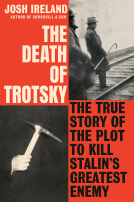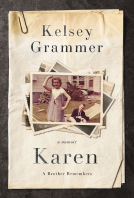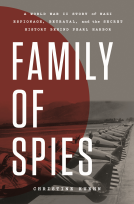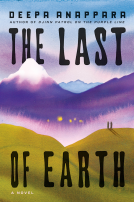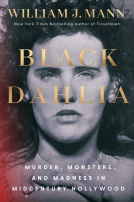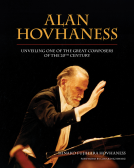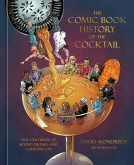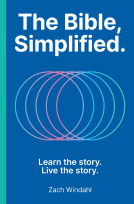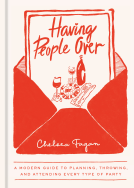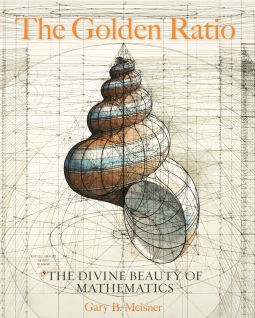
The Golden Ratio
The Divine Beauty of Mathematics
by Gary B. Meisner
This title was previously available on NetGalley and is now archived.
Send NetGalley books directly to your Kindle or Kindle app
1
To read on a Kindle or Kindle app, please add kindle@netgalley.com as an approved email address to receive files in your Amazon account. Click here for step-by-step instructions.
2
Also find your Kindle email address within your Amazon account, and enter it here.
Pub Date Oct 23 2018 | Archive Date Nov 05 2018
Quarto Publishing Group – Race Point Publishing | Race Point Publishing
Talking about this book? Use #TheGoldenRatio #NetGalley. More hashtag tips!
Description
From the pyramids of Giza, to quasicrystals, to the proportions of the human face, the golden ratio has an infinite capacity to generate shapes with exquisite properties. In The Golden Ratio: The Divine Beauty of Mathematics, Author Gary Meisner examines the presence of this divine number in art and architecture throughout history, as well as its ubiquity among plants, animals, and even the cosmos. This gorgeous, display-worthy volume features:
- Lay-flat dimensions that closely approximate the golden ratio
- The results of the author’s twenty-year investigation and collaboration with thousands of people across the globe in dozens of professions and walks of life
- Clear, enlightening, and entertaining commentary
- Over 250 captivating color images, including illustrations by Venezuelan artist and architect Rafael Araujo, photographs of nature and architecture, and famous artwork
The evidence closes the gaps of understanding related to many claims of the golden ratio’s appearances and applications, and presents new findings to take our knowledge further yet.
Whoever you are, and whatever you may know about this topic, you’ll find something new, interesting, and informative in this book, and may find yourself challenged to see, apply, and share this unique number of mathematics and science in new ways.
Marketing Plan
Key Selling Points:
- The original Golden Ratio book, which was published as part of the Everything Is Mathematical series in Europe, sold more than 1 million copies worldwide.
- Rafael Araujo’s Golden Ratio Coloring Book, which features some of the art we include in this volume, in full color, raised nearly $500,000 during its Kickstarter campaign, and several of his designs have been made into tatoos.
- The golden ratio is an extremely strong subject, just 5 key titles on the subject have sold a combined 300,000+ copies since 2004 (per Bookscan).
Key Campaign Activity
Publicity focus on pop culture and mathematics outlets
Target traditional trade outlets
Trade:
- Series pitch to: Library Journal, Publishers Weekly, Shelf Awareness, Booklist, Bookriot, NY Times, Wall Street Journal and NPR.
Consumer:
- Outreach to top pop culture and mathematics reviewers and outlets
- GoodReads Giveaway
Publicity/Media:
- Targeted pitches to pop culture outlets: Buzzfeed, Huffington Post, Mental Floss, Geekscape, Pop Culture Beast, Refinery 29, Wired, Entertainment Weekly, The Observer, etc.
- Targeted pitches to Mathematics outlets: The Big Questions, Boston Tech Mom, Chaos, Charged Magazine, The Endeavor, Inverse Problems, Numbers-WSJ blog, Scholastic DynaMath, American Scientist, Mathematics Teacher, Teaching Children Mathematics
Available Editions
| EDITION | Other Format |
| ISBN | 9781631064869 |
| PRICE | $35.00 (USD) |
| PAGES | 224 |
Average rating from 17 members
Featured Reviews
 Michaela K, Reviewer
Michaela K, Reviewer
The Golden Ration by Gary Meisner is an exquisitely illustration, beautifully and clearly written introductory book about the Golden Ratio and related subjects. There are lovely full-colour illustrations and photographs on nearly every page. The book begins with the unique properties of the golden ratio and then continues on to its appearance in art and design, architecture (pyramids, cathedrals, musical instruments), nature (leaf and petal arrangements, fractals, spirals, facial proportions, buckyballs, quantum physics, golden DNA, the nautilus controversy), and many other interesting mathematical goodies such as tessellations, platonic solids, the Fibonacci sequence, Pascal’s Triangles etc. The book also includes appendices that deal with critical thinking, notes and further reading, and “Golden Constructions”. There are a number of equations and geometrical illustrations, but nothing particularly complicated. In the author’s own words: “not everything is based on the golden ratio, but the number of places in which it seems to appear is truly amazing and we are sure to uncover it more and more as technology advances and out knowledge of the physical universe expands”.
 Claudia D, Reviewer
Claudia D, Reviewer
There are numerous books on Golden Ration topic, basically with the same information, more or less detailed. What stands out in this particular one is the presentation.
The book is divided in 6 sections: Golden Geometry, in which are outlined the basics of 1.618 number, Phi and Fibonacci, presenting the relation between the numbers in Fibonacci sequence and Φ, The Divine Proportion, on how the name was coined and its appliance in art, with examples from da Vinci, Rafael and Michelangelo, to name just a few, Golden Architecture and Design, showing various buildings and monuments using this ratio from the Great Pyramids to Nothe Dame, Golden Life, on how Phi is present from DNA to flowers and facial features and Golden Universe, in which we learn that Φ can be found from quantum level to planets’ orbits and black holes.
Each of these sections has diagrams and pictures, to deliver a better visual experience. It’s an exquisite read and even if you’re not fan of math, it’s an easy read, which will enchant both your eyes and your mind. Beside being a science book, it is also an art and photography album.
The Golden Ratio is a book on mathematics, written by Gary B. Meisner, an applied math guy who kept finding instances of phi (φ) in everything from sunflowers to renaissance paintings.
From his website:
The inspiration for the site was a deepening awareness and appreciation of the beauty and design in life. The more I explored, the more I discovered that the number called Phi, or 1.6180339…, appears as a pervasive constant of design in many aspects of our existence.
This book is ostensibly aimed at the layman. That being said, it's not going to be a free ride. Much of the content covers concepts which require a modicum of effort and thought. It is enjoyable on a surface read. The illustrations and accompanying notes are appealing and historically interesting, however, the meat of the book requires some effort and probably some fiddling with pen and paper, following the proofs in the book. The description of Pythagoras and the Kepler triangle made me smile. (It's both gorgeous and elegant).
The book is arranged in chapters which introduce and develop the idea of phi, explain the golden ratio and progress to a discussion of occurrences of the golden ratio in art, mathematics, biology, engineering, and astronomy amongst others. The text is accompanied by illustrations and stock photography which support and illustrate the examples. The book ends with appendices, a bibliography and further reading list along with notes from the author, image credits and acknowledgements and finishes with a cross referenced index.
This edition was released 18th Sept 2018 by Quarto's Race Point imprint, it's 224 pages and available in hardcover (and possibly ebook) formats.
Four stars for the engaging text and enthusiastic prose along with the lovely illustrations. The author's passion for the subject shines throughout the book.
 Reviewer 503414
Reviewer 503414
Thank netgally, the author for an Advanced Copy of this book. I really enjoyed this book. It's well worth reading
As opposed to pi, 1.342, we discuss phi, 1.618. This number is used to give a proportion and build rectangles, such that a painting may be shown to be two thirds one thing and one third another, with the more exact proportion of phi.
After a look at the Greeks and Arabian scholars and mathematicians, Kepler, Fibonacci and daVinci, we turn to paintings and architecture, then natural world occurrences. I enjoyed the many colourful graphs and photos. I am not at all sure that we are told anything new. Painters and architects constructed their work with care from outline up, so getting scale and perspective right and enabling them to transfer from a small work to a large surface like a wall, by gridwork. Photographers today use the principle of thirds up and across, dividing a view into nine. I think the imposition of some of the golden rectangles on portions of murals and photos seems arbitrary and forced in some cases.
This book will be enjoyed by those studying maths, and probably art and architecture as well. I downloaded an e-ARC from Net Galley. This is an unbiased review.
 Bookseller 363602
Bookseller 363602
This is a beautiful book. The art work and layout make it a joy to read. The great artists truly had a command of ratios like no others and nature shows us just how perfect it is.
 Librarian 68637
Librarian 68637
If you love math, geometry, and the history of both, this book is for you. The book provides an in-depth description of a concept in math called the golden ratio and its use throughout history. It is superbly illustrated.
 Michelle R, Reviewer
Michelle R, Reviewer
This was a beautiful book and would translate well to a hardcover coffee table book for someone who enjoys math and imagery. It was not as much fun to read on my iPad.
 cindy l, Reviewer
cindy l, Reviewer
Love this- there is more to just number, ratio or geometry. This book discussed this history of the golden ration and when and where it can be found, which is all over the place.
This is accessible and clear, and very understandable. Its a beautiful book and I enjoyed it very much.
Highly recommend.
 Reviewer 521062
Reviewer 521062
This book explores the occurrence of the golden ratio in history in various forms. Given my background in STEM, I really enjoyed reading this book!
 Alina G, Reviewer
Alina G, Reviewer
Even if it is written for people who don’t have much knowledge about mathematics, some effort is still required to understand the concept and the way it’s applied. Though I’m sure it can be enjoyable as a surface read also.
The book is comprised of 6 chapters, each of them offering more information on the concept of <b>phi</b> (Φ ≈ 1.618; aka the golden ration | golden number | golden cut | mean ratio | divine proportion), its relationship with the Fibonacci sequence, its use in art (Da Vinci, Michelangelo, Botticeli, Rafael), architecture (pyramids, temples, cathedrals), design (musical instruments, brand logos, cars, fashion), and other sciences, its presence in nature and the Universe. The text is accompanied by diagrams, photos and illustrations to explain and support the examples.
Even if I was amazed about phi's properties and mostly about its occurence in nature, and I deeply enjoyed the art and the historical voyage, I'm still not convinced about its intentional use in all the given examples, and I especially didn't like the divine note in which the book ended.
Readers who liked this book also liked:
Hinako Fujihara Hovhaness
Biographies & Memoirs, History, Nonfiction (Adult)
David Wondrich
Comics, Graphic Novels, Manga, Cooking, Food & Wine, History
Coco Morante
Cooking, Food & Wine, Health, Mind & Body, Nonfiction (Adult)
